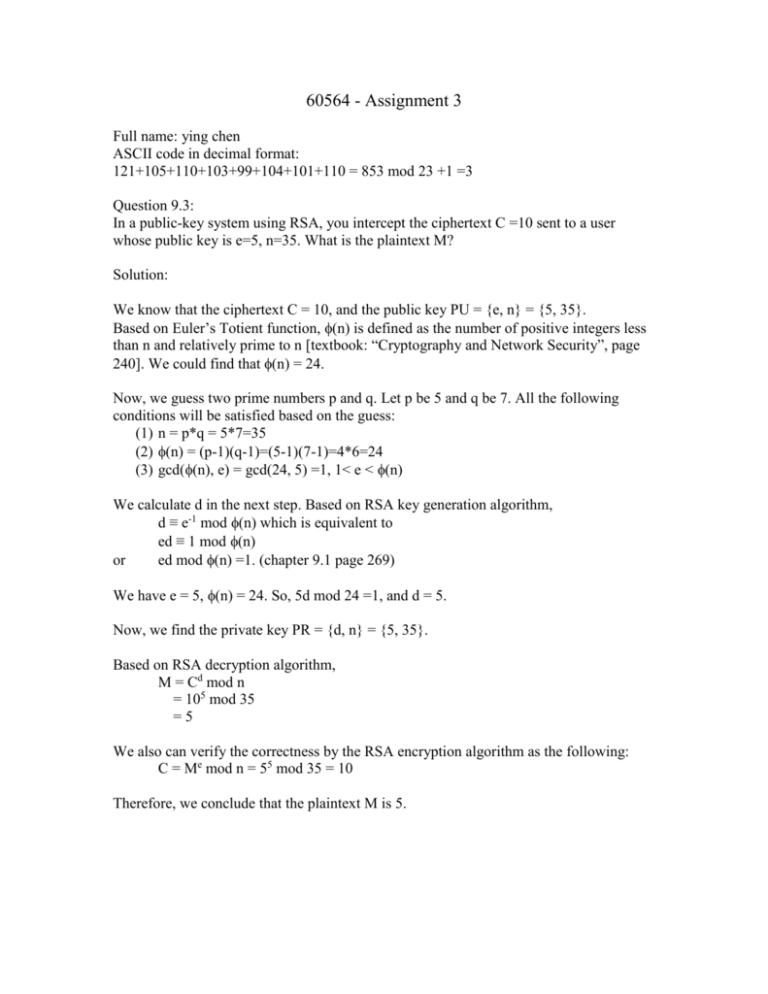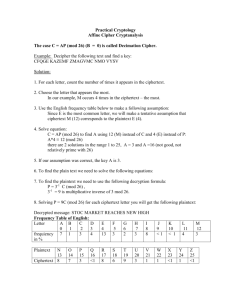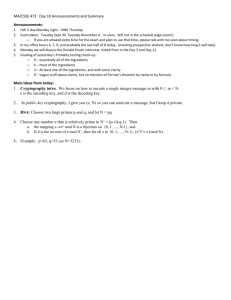60564 - Assignment 3
advertisement

60564 - Assignment 3
Full name: ying chen
ASCII code in decimal format:
121+105+110+103+99+104+101+110 = 853 mod 23 +1 =3
Question 9.3:
In a public-key system using RSA, you intercept the ciphertext C =10 sent to a user
whose public key is e=5, n=35. What is the plaintext M?
Solution:
We know that the ciphertext C = 10, and the public key PU = {e, n} = {5, 35}.
Based on Euler’s Totient function, (n) is defined as the number of positive integers less
than n and relatively prime to n [textbook: “Cryptography and Network Security”, page
240]. We could find that (n) = 24.
Now, we guess two prime numbers p and q. Let p be 5 and q be 7. All the following
conditions will be satisfied based on the guess:
(1) n = p*q = 5*7=35
(2) (n) = (p-1)(q-1)=(5-1)(7-1)=4*6=24
(3) gcd((n), e) = gcd(24, 5) =1, 1< e < (n)
We calculate d in the next step. Based on RSA key generation algorithm,
d ≡ e-1 mod (n) which is equivalent to
ed ≡ 1 mod (n)
or
ed mod (n) =1. (chapter 9.1 page 269)
We have e = 5, (n) = 24. So, 5d mod 24 =1, and d = 5.
Now, we find the private key PR = {d, n} = {5, 35}.
Based on RSA decryption algorithm,
M = Cd mod n
= 105 mod 35
=5
We also can verify the correctness by the RSA encryption algorithm as the following:
C = Me mod n = 55 mod 35 = 10
Therefore, we conclude that the plaintext M is 5.











